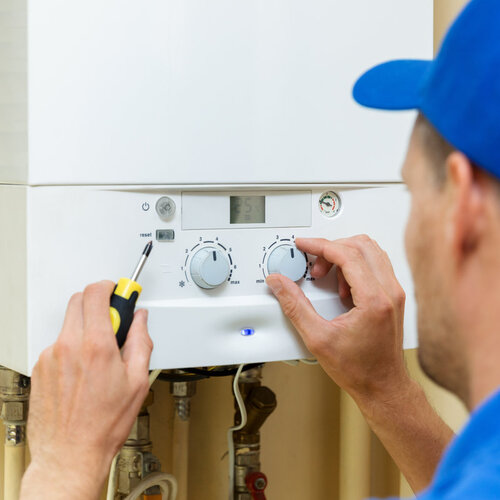
Keeping Your Heating System in Shape
This may be Cajun country, but that doesn’t mean the winters don’t get cold! If you haven’t had to fire up your home’s heating system yet, now is the time to check and determine if your heating system is not working. Because once that first frigid winter weather hits, getting professional heating service is going to be a challenge.
What are the components of a heating system?
To know how a heating system works, it helps to know what the components make a heating system function. With that knowledge and understanding, you can often fix small issues yourself, you’ll have a better idea why maintenance is important, and it can also help you explain any problem you’re having when you call for professional heating service.
THE HEAT EXCHANGER
The heat exchanger is within the frame of the furnace. It absorbs heat and warms the cool air when the thermostat activates it. A heat exchanger is part of all furnace types and is an important component made from solid stainless steel that is temperature-resistant. This structure prevents the unit from cracking and some models have a specialized duct that lets cool air enter faster so your home heats faster.
This is the part that can be related to carbon monoxide leaks when it isn’t working properly. If anyone in your home is having headaches and problems with nausea, you should have a professional heating service inspect the system. Carbon monoxide is a colorless and odorless matter, having a CO detector installed in your home is recommended along with having a professional inspection annually. If the detector signals there is CO in the air, call a heating service immediately.
THE BLOWER MOTOR
Once the air in the heat exchanger reaches the temperature you have the thermostat set, the electric blower motor turns on the fan that forces that warmed air through the ductwork. From the ductwork, that warmed air blows through the air registers in each room. When the blower motor goes out, it is easy to replace, but having a professional heating service do the replacement is recommended so that you have a warranty. By doing it yourself, you could void the warranty on the entire HVAC system.
THE COMBUSTION CHAMBER
For a furnace’s combustion to work properly, it must have oxygen. This allows the furnace to add air to fuel inside the combustion chamber, aka the burner. The heat cycle starts in a gas furnace when a small bit of air and gas mixture gets inside the combustion chamber.
Then the pilot light ignites that mixture, and a controlled fire burns and air moves it over the burner. If the pilot goes out and won’t stay lit, you need to have a professional heating service inspect the unit. After the heat has been off all summer, it isn’t uncommon to have calls from homeowners their heating system smells like burning. In most cases, this is nothing more than dust burning off from the summer. However, a service call is worth the expense if there is a concern.
THE COMPRESSOR OR CONDENSER COIL
The compressor or condenser coil is part of the air conditioner and is typically installed on the outside of your home. A condenser cools your home as it releases heat outside. This happens as it compresses and condenses the refrigerant from the warm gas it comes in, to a cold liquid. And then the fan blows air over the compressor and disperses the heat to cool the refrigerant quicker. Then, the HVAC system sends the liquified refrigerant through a line or tube to the evaporator coil.
THE EVAPORATOR COIL
Your evaporator coil is another important component of the air conditioner. As the HVAC system brings the liquified refrigerant to several small nozzles, the liquid refrigerant is sprayed so that it can evaporate into a gas faster. This process absorbs heat and makes your home cool.
THE THERMOSTAT
The thermostat is what tells the air conditioner or heater to turn on. It is usually located in the center of the house on an interior wall that is away from direct sun or drafts. Often, technicians with heating services have found that when a homeowner complains of the heating system blowing cold air, it is the thermostat is not set correctly.
What is the most efficient heating system for a house?
If you’re trying to figure out when to replace a heating system, you have a lot to think about. Another question you may have is “What heating system should I install?” That’s an understandable concern because there are many different types available today. Most homeowners will replace their furnace with a similar furnace; for example, a gas furnace with another gas furnace, or electric with electric. But you may want to look into a geothermal system.
They have proven they provide a more efficient heat, which helps you with your utilities, up to seventy percent, and the environment. Like other types of heat pumps, they are also very safe and environmentally friendly to operate.

At The End of The Day
So, another question you may have – which is the cheapest heating system to run? Today, of the four different types of power electricity, natural gas, oil, or propane most professional heating services will advise you to go with natural gas heating. It burns cleaner and more efficiently. For most homes in this country, natural gas is their source for heating and cooking.
